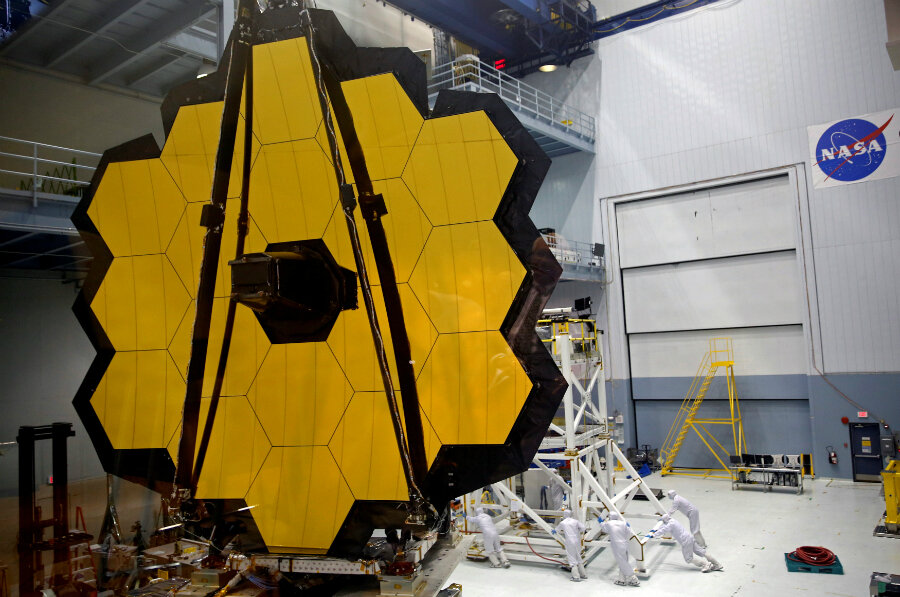Countdown to Hubble's successor, James Webb Telescope, readies for launch
Loading...
The largest space telescope ever constructed is now complete and ready for testing, NASA officials announced on Wednesday.
The James Webb Space Telescope (JWST) is the successor to the Hubble Space Telescope, but with bigger mirrors and stronger capabilities. Expected to launch within two years, the telescope was an effort 20 years in the making that saw delayed deadlines and financial setbacks.
"Today, we're celebrating the fact that our telescope is finished, and we're about to prove that it works," John Mather, an astrophysicist and senior project scientist for the telescope said in a news conference as reported by Space.com. "We've done two decades of innovation and hard work, and this is the result – we're opening up a whole new territory of astronomy."
While its predecessor is credited with unveiling important discoveries including the acceleration of the universe’s expansion, the JWST is expected to go even further by exploring the birthplaces of planets, stars, and first galaxies born after the Big Bang more than 13.5 billion years ago with its sensitive infrared cameras. These observations will not only help scientists understand the origins of the universe but at the same time, look for signs of life in other planets.
"We'd like to know if another planet out there has enough water to have an ocean, and we think we can do that," Dr. Mather said on one of the project’s missions to explore the Alpha Centauri system, Popular Mechanics reports.
The $8.8 billion space telescope will be launched from French Guiana to a place called the second sun-Earth Lagrange point, located four times the distance between the Earth and the moon. It is equipped with mirrors 2.7 times bigger than Hubble’s and powerful detectors that can observe very infrared lights 400 times fainter than current space-based telescopes can see, as Space.com points out, even through cosmic dust and atmospheres of exoplanets.
For example, it will be able to "see a bumblebee a moon’s distance away," Mather said, "both in reflected light and in the body heat the bee emitted."
A five-layer sunshield the size of a tennis court will protect the telescope’s mirrors and instruments from the sun, Earth, moon, and its own electronics, with mirrors that will be kept at a temperature of minus 388 degrees F.
The next step before launch will be testing at multiple facilities and a final assembly in California to ensure the telescope can withstand the noise and shaking of a rocket launch. Unlike the Hubble, the telescope is not intended to be repaired once it is in orbit. The scientists expect it to be in orbit for 10 years. After it is launched, its large lenses will unfurl as it travels and be ready for experiments in six months time.
The JWST is the result of a collaboration between NASA, the European Space Agency, and the Canadian Space Agency. Originally scheduled for launch in 2013 at a cost of $5 billion, budget constraints nearly canceled the project. But with its completion and scheduled launch date in 2018, it is expected to join the Hubble in space.
Using both space telescopes at the same time, according to Ken Sembach, of the Space Telescope Science Institute (STScI), "really gives you a more panchromatic view of the universe than you would get just from Hubble alone, or just from Webb alone," The Christian Science Monitor previously reported.








